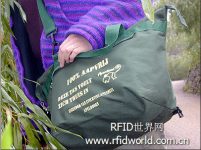
RFID helps Dutch zoo reduce traffic jams
[ad_1]
The Apenheul Primate Zoo in the Netherlands covers 32 acres and houses 35 species of monkeys, apes and lemurs. The zoo allows monkeys to move freely and get up close and personal with visitors, creating a unique and intimate human-monkey experience for visitors.
Since the official opening of the zoo in 1971, this new way of operating has proved very popular. However, as the zoo celebrates its 30th anniversary, things seem to be getting a little too popular. The zoo has experienced “traffic jams”, with the zoo’s director of marketing and education Bert Smit saying hordes of customers often gather in different parts of the park, making it difficult for other people to get through. “
Traffic jams have a negative impact on tourists, who not only spend more time queuing, but are less likely to see monkeys; for monkeys, crowded, noisy people often keep them away.
Clearly the zoo needs to redesign its facilities and tours to accommodate the increasing number of visitors (over 5,000 per day); before that, zookeepers must better understand which places are visited most often, including the formation of traffic jams where, when and why. To obtain this data, the zoo uses RFID technology.
From July to October 2005, the zoo used active tags carried by visitors to collect the time and location of tag reading, and then simulate the flow of people in the park. The process of distributing and recycling tags is simple: the zoo provides visitors with more than 5,000 green canvas bags called “monkey bags,” with RFID tags sewn into 200 of them.

The “monkey bag” carried by tourists
Smit said the zoo asked visitors to put all wallets, backpacks and other carry-on items in the monkey bag in case the monkeys took some valuables away. The monkeys who are in close contact with the crowd are increasingly used to stealing food from visitors.
The zoo chose Wavetrend’s TG-501 active RFID tag, which can be used for people tracking and has a slim body; 11 Wavetrend readers are installed in the park, which can read 433 MHz tags within 10 meters. Both tags and readers use Proprietary air interface protocol.
Visitors were not told that some of the bags had RFID tags in them, although the tags were clearly visible, and the staff inserted the tags with a red thread for better identification at the exit collection point. If a visitor asks about the difference between the bags, the staff will explain it.
“If they don’t want to carry an RFID-tagged bag, they can switch to an unlabeled bag,” Smit explained, and since the tag’s ID has nothing to do with the carrier’s personal information, the zoo doesn’t consider this an infringement of visitor privacy. Although there are individual tourists who expressly request the use of unlabeled bags, the vast majority do not object to carrying labelled bags.

RFID readers will be installed throughout the zoo to read tags to determine when and where crowded areas are
The 200 label packs were distributed a total of 10,000 times during the four-month test period. The zoo originally wanted to develop a software to monitor the movement of tags in the park in real time, but due to budget constraints, the zoo eventually partnered with nearby Tilburg University. University interns collect daily tag reading records through their readers, using Microsoft Access to populate graphs showing the time and location of each read.
With this information, the zoo made some adjustments to the layout of the park to make the flow of people smooth, such as adding some aisles and increasing the frequency of interactive introductions.
The zoo now plans to use the tagging package again next year for another project, Smit said, which aims to capture the age composition and interests of visitors, and seeks prior consent for the new project.
[ad_2]



